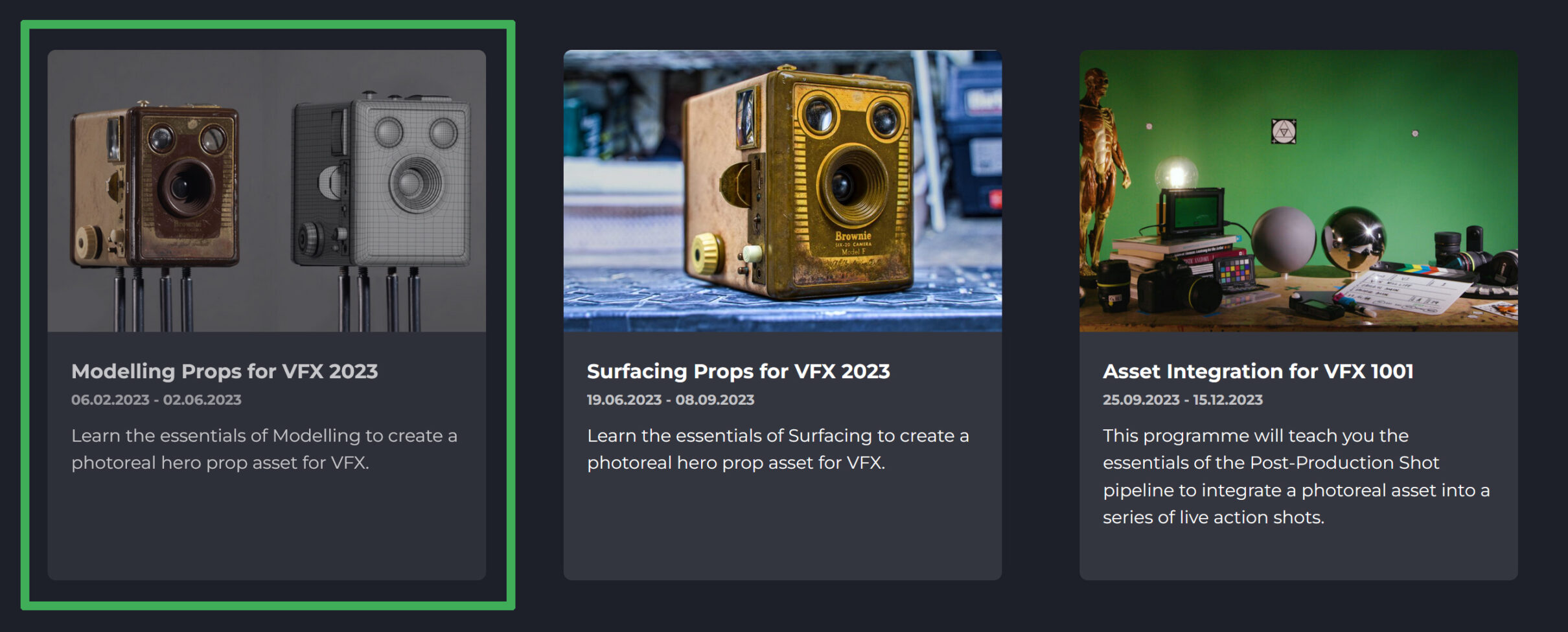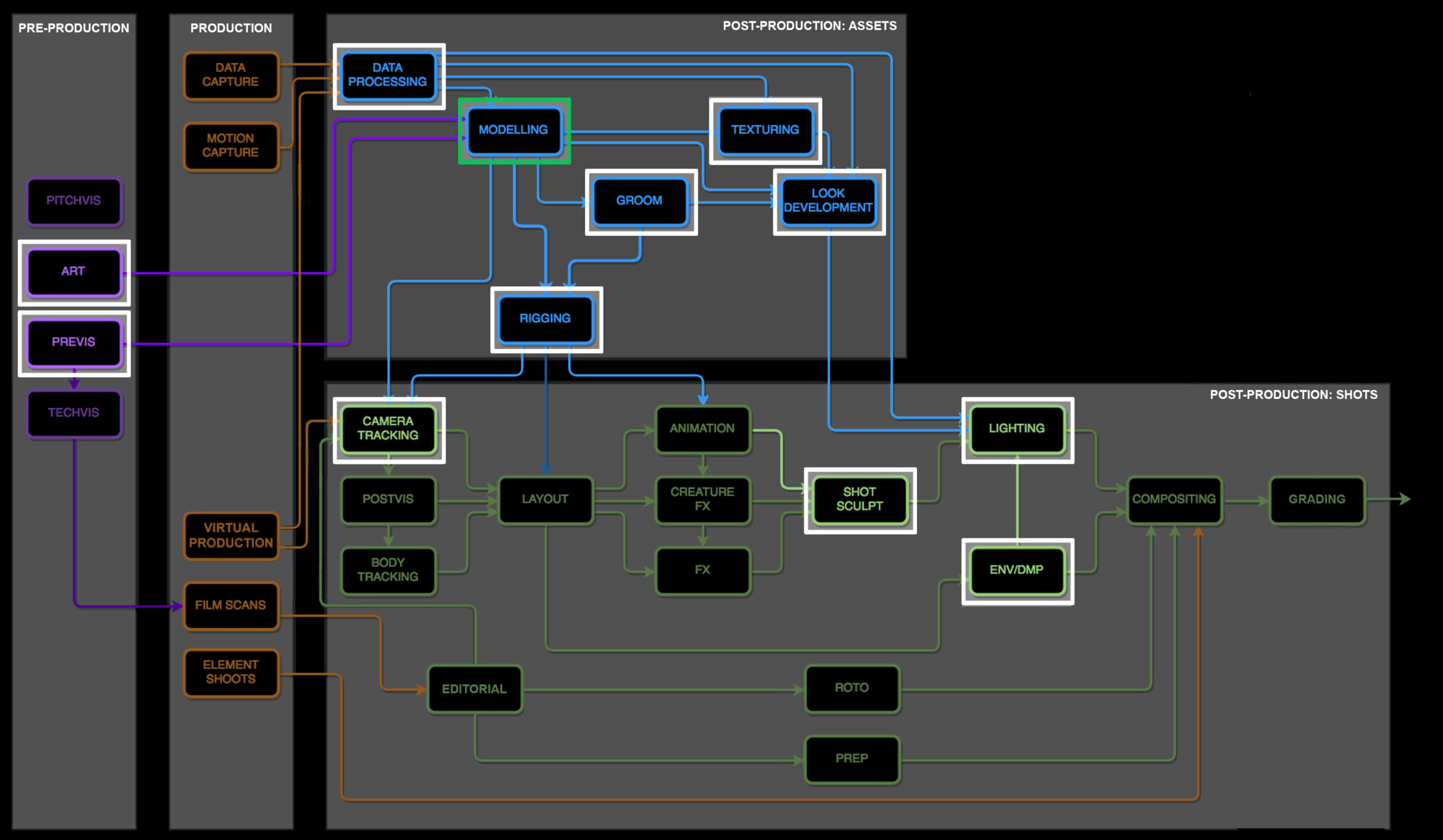Modelling Props for VFX 1001
Learn the essentials of Modelling to create a photoreal hero prop asset for VFX
Learn how to create a photorealistic asset suitable for high-end VFX
Modelling Props for VFX is an on-demand course where students will be taught the fundamentals of 3D Modelling to create a photoreal, pipeline-ready prop for VFX. Through practical hands-on learning, we’ll cover a wide range of topics covering the asset modelling process.
This course is the first of a series that will teach you how to build an asset and push it through the VFX pipeline to create a number of believable shots. You can enrol on this course as a standalone, or if you’d like to develop a wider skillset, you can do so by joining us on Surfacing Props for VFX and Asset Integration for VFX.
We’ll also discuss other areas of the CG pipeline that are integral to the success of any project, such as Onset, Surfacing, Lighting, Production, Bidding and Scheduling.
To underpin each stage lesson and to push your creative, technical and problem-solving skills, we’ll study the fundamentals and the theory behind Modelling. This includes studying real-world materials, pushing our traditional skills, art, shape, function and form. This background research will directly feed into how we approach the creation of CG assets.
The outcome of the course is to provide you with a strong modelling skillset enabling you to have a core understanding of the VFX modelling pipeline and an ability to apply these skills to real-world projects.
Lessons in this course
-

08. Creating your UVs
In this lesson, we’ll discuss the importance of creating a well-structured model hierarchy and establishing and sticking to a naming convention. It may seem like the boring stuff, but by doing so, you can ensure the smooth running of a project, especially when multiple assets are required. We’ll also look at organising our UVs and creating a series of UV Sets. -

11. Creating a Model Turntable and Contact Sheet
This week, we’ll be setting up our render and outputting a clay and wireframe layers. Following on from this, we’ll look at creating a model turntable template in Nuke. This template will then be used for all future model turntables, allowing us to easily compare the differences from one version to the next.
COMING SOON
Click on the link below to join the waitlist.



















